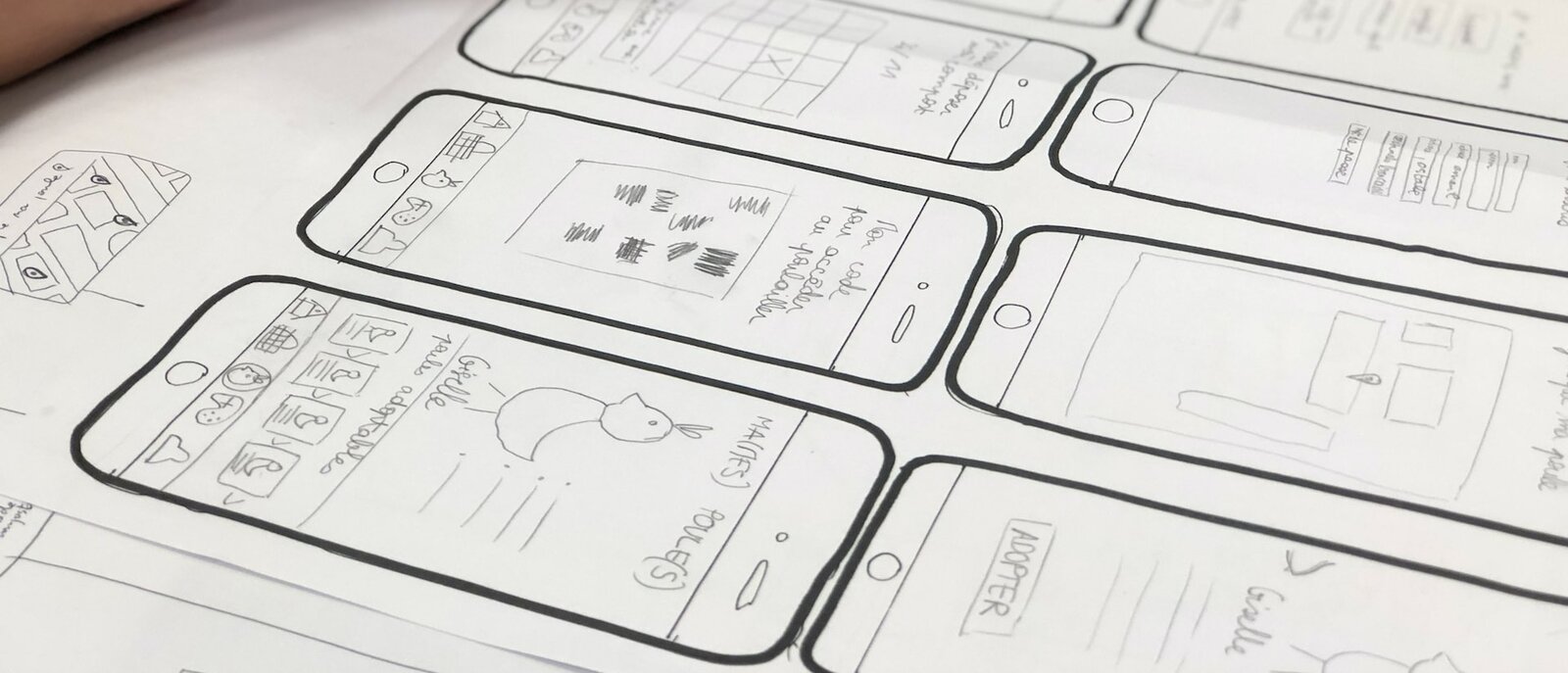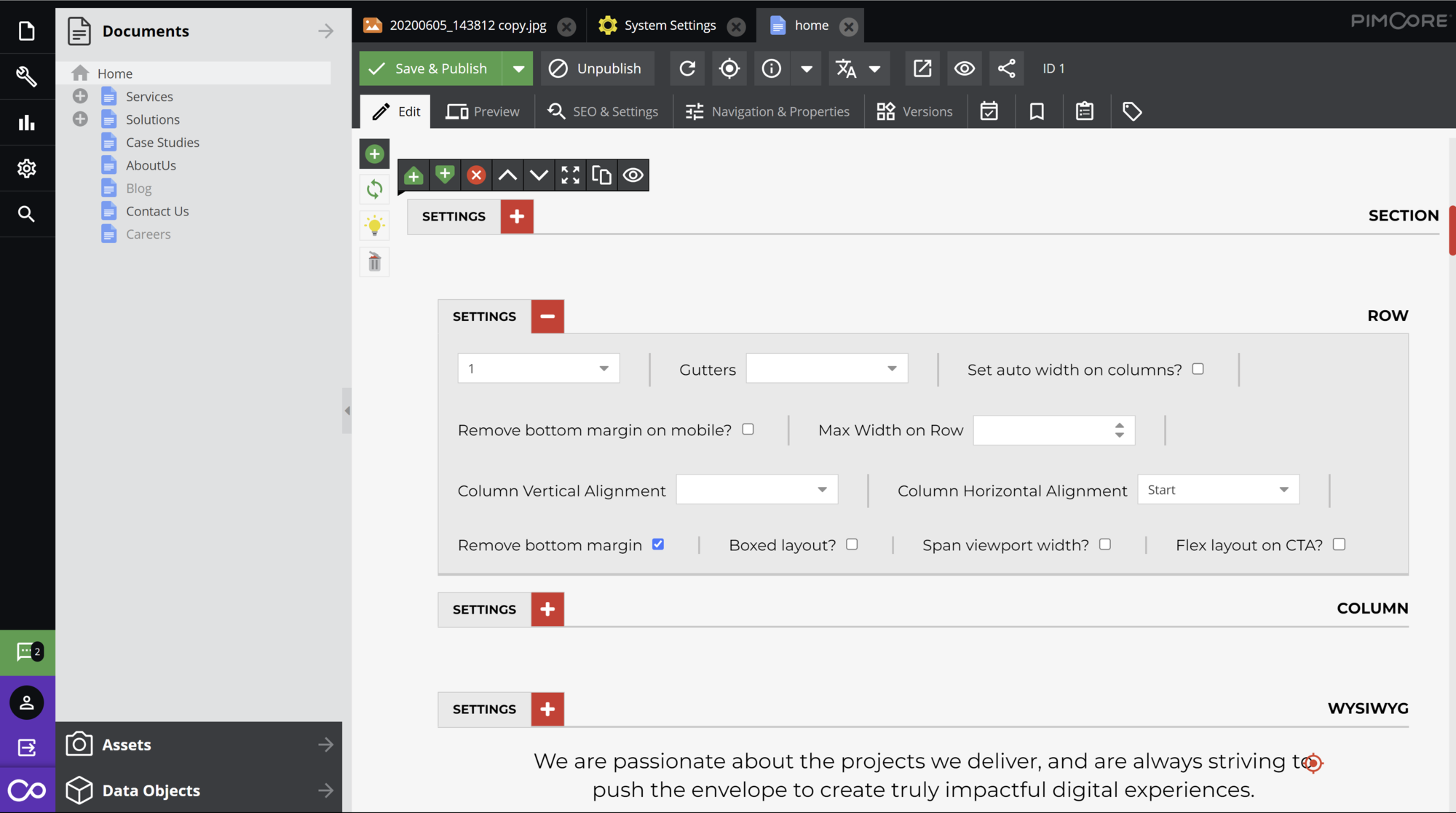Our website relaunch: a custom page builder to accommodate creative freedom.
There are so many options out there these days for building websites. Whether you're using Squarespace or Wix, with their all-inclusive offerings, or you’re leveraging WordPress and its various theme options, there are endless possibilities at our fingertips.
Our company website has been through many iterations, with the first built using Next.js as the frontend framework and TinaCMS as the headless component. The website was attractive, performant, and secure, but managing the content was less than desirable. This prompted the team to migrate the website to Wix, where the content management could be done through a user-friendly interface, without any code knowledge. Things were looking up. But then we ran into a roadblock; Wix wasn’t playing nicely with Pipedrive, the software we use for organizing career applications and other web forms.

Next stop, Webflow. We ported everything over and things were working great from the developer side, even though we still couldn’t integrate with Pipedrive directly. Then one of our clever team members stumbled upon Make (formerly Integromat), a web application for automating workflows to apps and systems. With the help of Make, we were now able to organize our application data using Webflow, and any JavaScript code we added to the website was more easily dealt with as compared with the previous Wix instance. On the content creation side, admins were able to easily add and edit content, and the website design and performance were almost as good as they were before the switch. Boom, we were satisfying both our developers, and our content creators. Job well done.
Fast forward to 2022, we started thinking about the website again. We’re Pimcore experts, and we deliver Pimcore solutions to an array of clientele in various industries, so we thought, why isn’t our company website built on Pimcore? Why don't we practice what we preach? Because what we’re preaching is great stuff, after all.
So, the consensus was unanimous, the site would be re-designed and re-written using Pimcore and Twig. After all, Pimcore and its digital experience platform solutions are what we use every day to create beautiful end products for our clients. Among the six modules that Pimcore has to offer is a content management system (CMS). The choice was clear that we would leverage the CMS to produce a secure, and easy to manage website.
In late 2022, we hired a UI/UX expert, who came from a WordPress background, specializing in custom theme development using the Gutenberg Block Editor. They wanted the user interface in the Pimcore CMS to act similarly to that of the Gutenberg Editor, where you can freely design a page layout using pre-defined blocks, such as the spacer, header, button, and WYSIWYG blocks. Because Pimcore Editables are similar in structure to Gutenberg Block building, this approach was easy to achieve. With a combination of custom fields and area bricks, we were able to build a robust page editor out of a small number of bricks, allowing the content creator to build complex layouts with ease. This also meant that the content creator was not limited to restrictive component layouts, where the design is already applied to the component, with no room for creative freedom. While templates are good, and less is more, it’s nice to have the option to create complex layouts, especially when your team has the technical know-how to implement.

This is not to say that Pimcore is a replacement for WordPress. Both platforms have their place in the game. Our experience tells us that WordPress is great for businesses that don’t manage product data or need an all-inclusive digital experience platform. Both WordPress and Pimcore have the ability for decoupling and headless CMS, using REST API endpoints. Naturally, we just felt it was the right move to leverage Pimcore’s platform for our use case.
A website is a living, breathing thing, that needs care and attention. Also, there is no such thing as a completed website; it’s in a constant state of change. Other than the fact that a blog needs to be updated on a regular basis, a website at its core needs a periodic refreshment and scheduled maintenance. Platforms like WordPress and Pimcore allow us to keep this maintenance sustainable and efficient.
In the end, our team is happy with the journey we’ve taken to get to where we are now. It’s always going to be an exercise in learning when choosing what platform best suits a web project, and for the team that will administer the project moving forward. There are many options out there, so having the opportunity to test the waters on a few different platforms enabled our team to learn about and grow our company website to what it is today. An efficient, performant, attractive, and secure website that’s easy to update, built with the software that we love. What more could you ask for?












